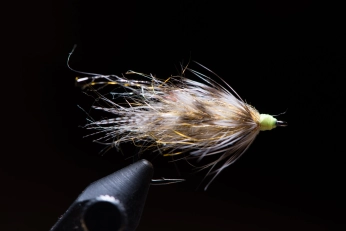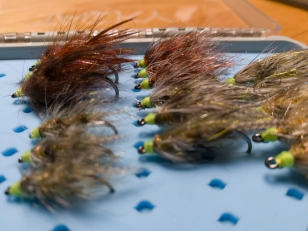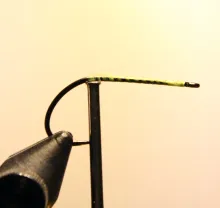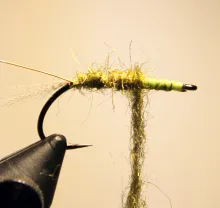We always say that sea trout in the ocean are opportunistic and will take almost any fly. This pattern disproves that thesis
We take two annual trips to fish for sea trout. OK, most of us take more two, but the spring and autumn summits where friends from several countries meet to fish here in Denmark are special. We have covered them before: a week of good camaraderie, good food, a wee drink now and then, lots of fly tying – and then some fishing of course.
Constants and variants
But if you come for the fishing alone, you might get a bit disappointed. Because as it is with fishing, the outcome varies. When it comes to the food and drink, the quality level is high and constant. When it comes to good mood and good friends likewise. When it comes to the quality of the fly tying... well, let's let that rest... But when it comes to the fishing the quality level is wildly varying. Fishing depends on so many factors out of control: weather, conditions during the previous season, the fish behavior, the effort made by the anglers, the locations, the presence of other anglers and much more. Sometimes we have excellent fishing. Sometimes it's OK. Sometimes it's downright miserable.
Autumn 2016
During our trip in the autumn 2016, fishing was well above average. The location was a well known one that we had visited many times before. We had even staid in the same house. The spots we fished were well known. The weather wasn't perfect, but not totally crazy either. We didn't celebrate one big fish after the other, but we did celebrate a fantastic number. Rüdiger, the guy who tied up this pattern, caught close to 40 sea trout during the week, which must be an all time high for one of these trips, and, as he said, matched what he would normally catch in a year.
And not only the number was impressing, but also the fact that the fish were caught on one single pattern, the one shown here: the Tryggelev Terror. Tryggelev is one of the locations we frequently fish.
That fly
Rüdiger and Kai were fishing together and found fish. Not big ones, but nice fish in the 40 centimeter range – which is about 16 inches for the non-metric. That's not a big sea trout by any measure, and we like them larger... of course. But when the alternative is catching nothing, then 40 centimeters isn't bad at all. And there were a few larger fish in the roster. A couple about 50 centimeters or some 20 inches were kept for the pan.
Rüdiger literally hauled the smaller ones in. A take in almost every cast in some periods. Kai was fishing right next to him, and didn't feel a thing. Rüdiger was fishing a small, discrete fly with no major characteristics apart from a bright chartreuse head. Dubbing, teal, a bit of flash and not much to advertise itself. But it worked.
And once he gave Kai a couple to try, Kai started catching fish too. And when Henning arrived, same thing: Rüdigers fly did the trick.
Kai Nolting
Opportunistic fish
We mostly say that when sea run trout are around, it's only a question of getting the fly out there, and then they will take. And it's true. In a far majority of the situations where we encounter feeding fish, they will take basically anything. Finding them and presenting the fly right is the key. Matching the hatch is secondary.
Well, not so here.
The fish were quite obviously many, they were active, visible in the water, skipping the surface and hunting. But they weren't going to take any odd fly. Rüdiger's small, neutral fly was it.
"Effective fly - easy to tie" as he says.
Rüdiger ties the fly in two versions: an olive green one and a brown one. The difference lies in the color of the dubbing. You can of course experiment with more colors.
|
|
|
|
|
|
|
|
|
|
|
|
- Log in to post comments























